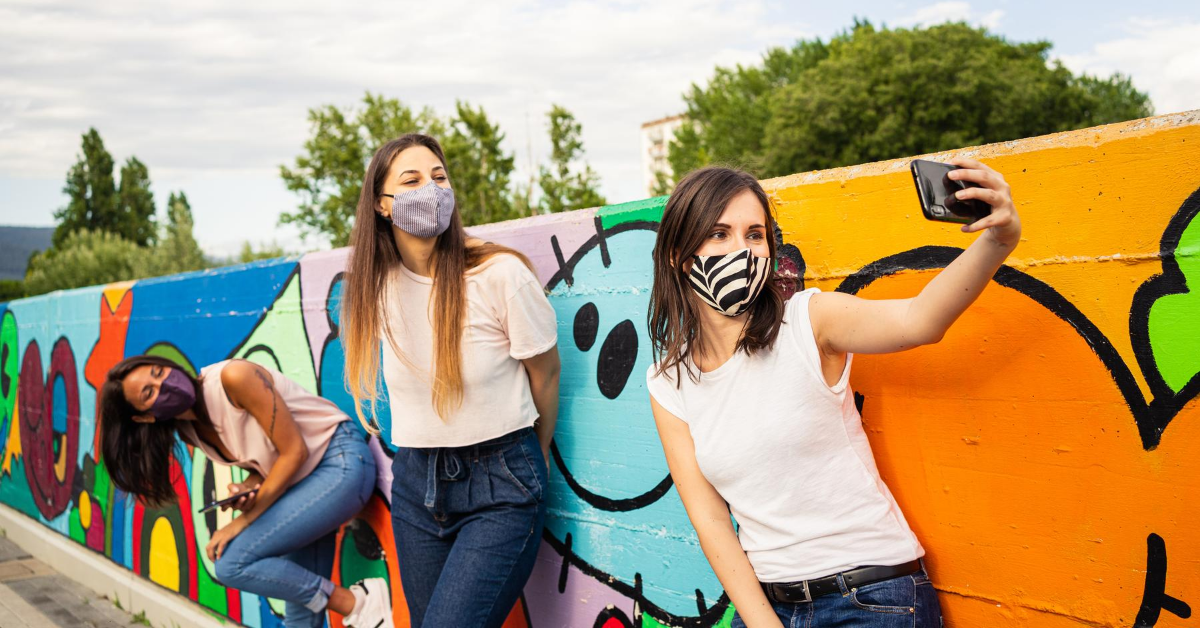
Since the beginning of the pandemic, Dr. Melissa Hennessey spends some of her days trading in the lab coat she typically wears to see patients. Instead, she dons personal protective equipment (PPE) when volunteering to serve at Tryon Medical Partners COVID-19 testing sites.
An internal medicine physician at Tryon’s SouthPark office, Hennessey now reports to work at a satellite location, seeing only patients who fear they’ve contracted coronavirus. And, for those whose worries are confirmed by testing positive, she calls to discuss their test results, talk about quarantine procedures and answer the myriad of questions they undoubtedly have.
The most common thing they ask, Hennessey says, is, “What about my family and friends?”
Often, even more than themselves, people first worry about those they love. As we’ve read in countless news stories and heard directly from the Centers for Disease Control (CDC), the risk of spreading COVID-19 while still asymptomatic is significant, meaning one person can infect those they interact with days before they even know they’re sick. That makes the ones closest to us the most vulnerable.
We know staying home and away from others is one of the best ways to prevent the spread of COVID-19. But, as the pandemic drags on month after month, the need for socialization intensifies. The question is: can we set ourselves up to have a social life and still mitigate the risk for infection?
“I’m going to recommend Zoom and FaceTime first and foremost,” says Hennessey, who is seeing more patients each day seeking COVID-19 tests with record numbers still being recorded in North Carolina and Mecklenburg County.
“We are social beings and we like having contact,” Hennessey said. “Seeing others during this time is a personal choice. You have to weigh the health risk versus the social reward. No matter where you fall on that scale, we all have the same goal. We want a new normal social life while being safe and keeping everyone we love healthy.”
When considering the best way to achieve both goals, we asked Hennessey how to consider in-person socialization during this time.
Define Your ‘New Normal’
Before you go down the path of planning to see friends or family, start with thinking about your comfort zone, Hennessey says. Define your own preferences first. Would you feel comfortable being indoors or would you prefer to stay outside? Would you be confident in a group of four or rather keep it with just one friend? How will I handle a friend who declines to wear a mask?
By asking yourself these questions first, you’ll be able to recommend scenarios that keep you most at ease.
Build Your Bubble
During a time when personal choices impact everyone we come in contact with, we want to build a social bubble composed of people we trust. Finding a like-minded group is important, Hennessey says, as are the conversations you need to have first.
“Don’t be afraid to have a frank, open conversation about social habits,” Hennessey said. “You want to come to an understanding of what feels right to everyone. Ask questions. The keys are trust and honesty.”
Among what you discuss, make sure everyone is on the same page about being willing to “self report.” If someone has traveled recently, been exposed or is having symptoms, it’s important they make the choice to opt out of any upcoming plans they have with you. And, if after a get together, someone finds out they may be sick, they must let the group know so everyone can take proper precautions.
Be Gracious With Others
As we all navigate these new scenarios, it’s important we do so with compassion. Everyone’s comfort level will be different so if you reach out to discuss getting together with a friend, give them the ability to opt out with no hard feelings.
“Be very frank,” Hennessey says. “Tell them you’ve missed them and would like to see them. Let them know what you’d feel comfortable with and allow them to share how they’re feeling. The kinds of conversations we have to have take friendship to a different level. Be gracious because, once we’re on the other side, we want our relationships to have weathered the storm.”
Another part of reality is dealing with potential coronavirus exposure, a risk anyone takes who is interacting with others. It’s likely to happen at some point, Hennessey says. When a friend tells you they have been exposed and, in turn, may have exposed you, be understanding. And if you’re the one making those difficult phone calls, remember everyone in your social group has taken the same risks to see one another and you shouldn’t bear the guilt.
“Part of setting up the best framework for being social is also to plan for what happens if you’ve been exposed or have symptoms,” Hennessey said. “Know your options for being tested for COVID-19, but also make sure you have a primary care provider so you’ll have that relationship to trust and fall back on when you need it most. We’re here to share the information you need to keep you healthy and give you the absolute best care when you need it most.”

